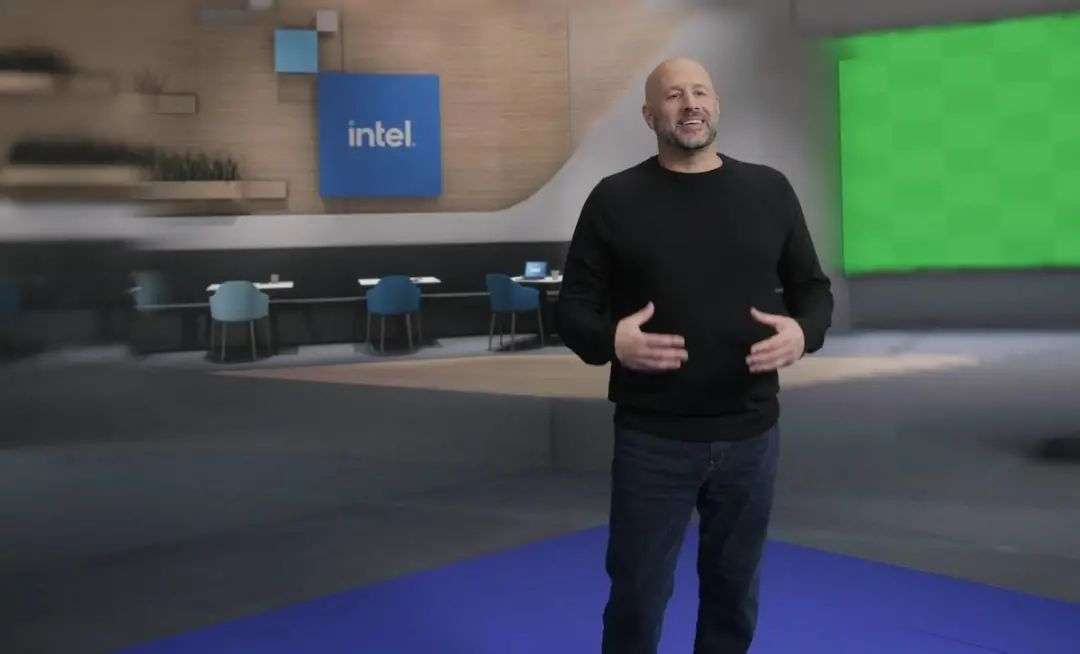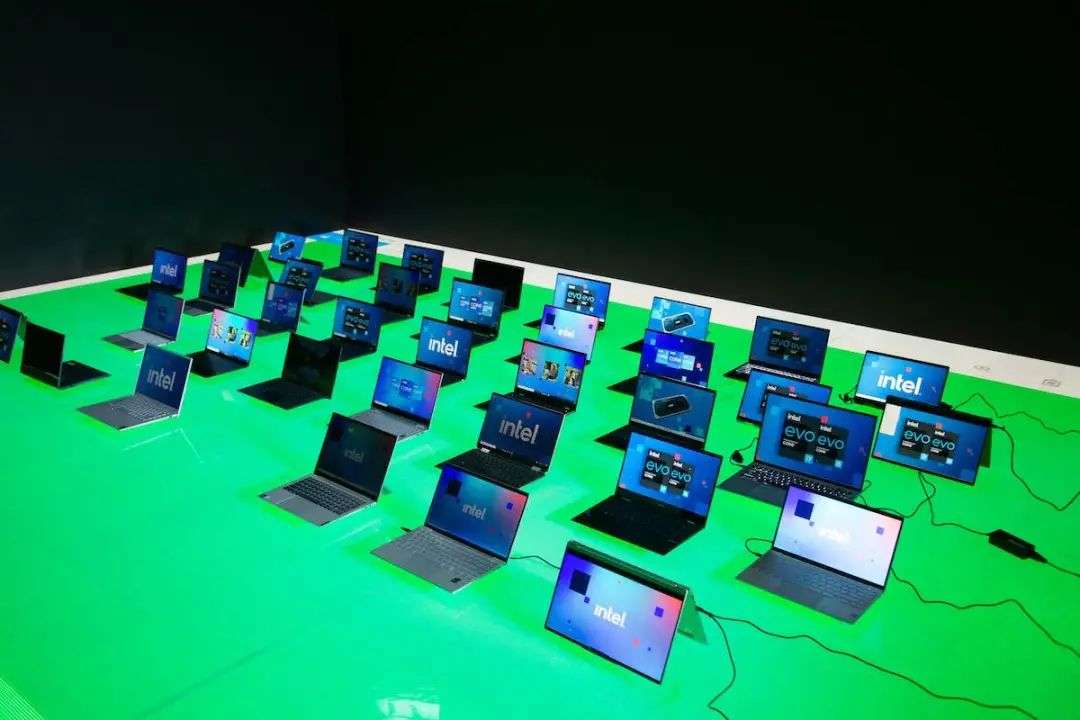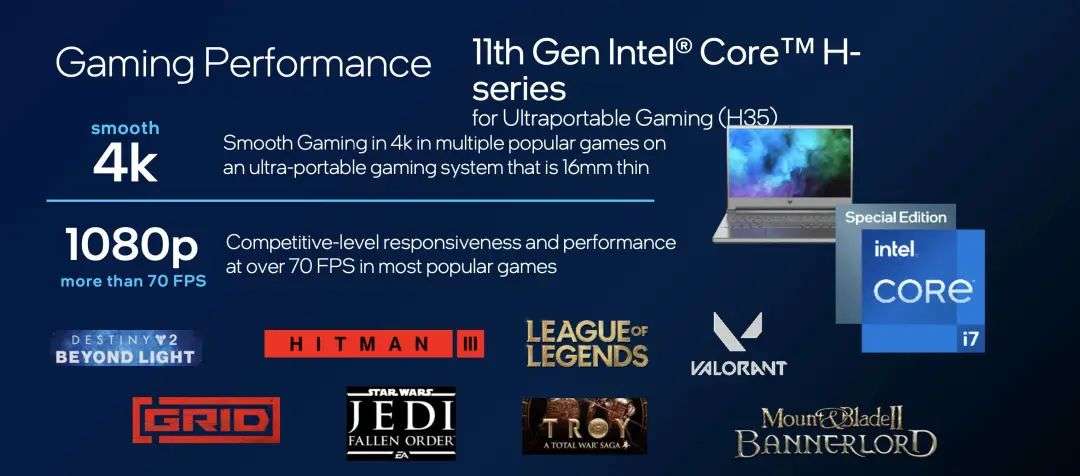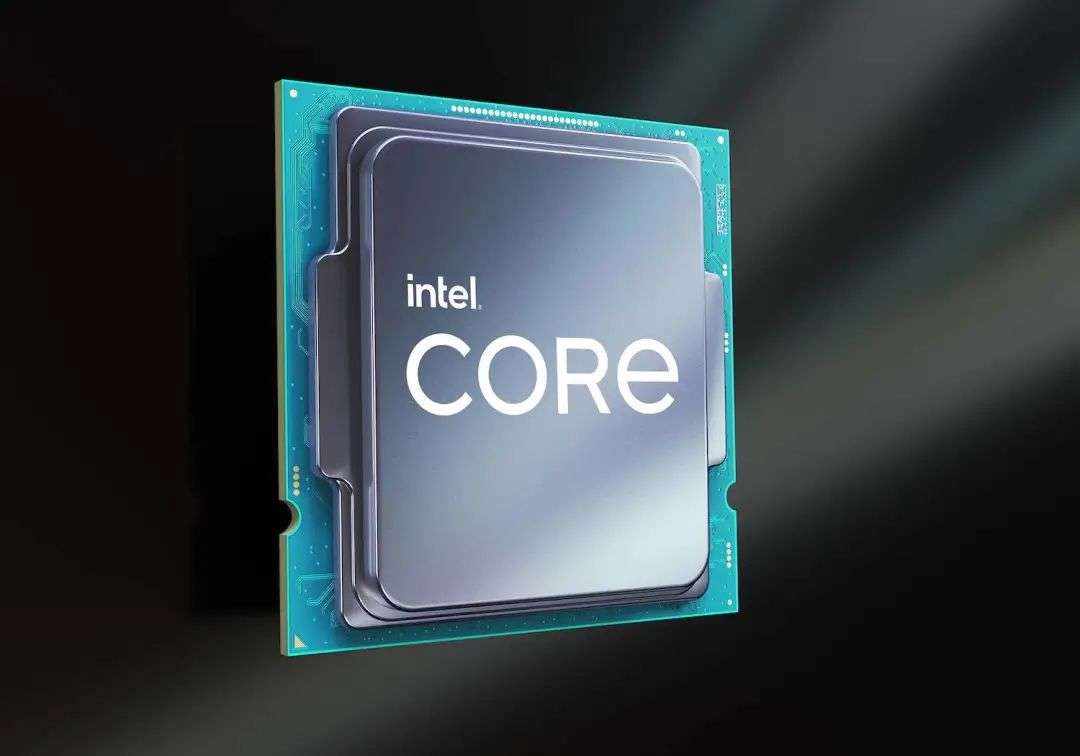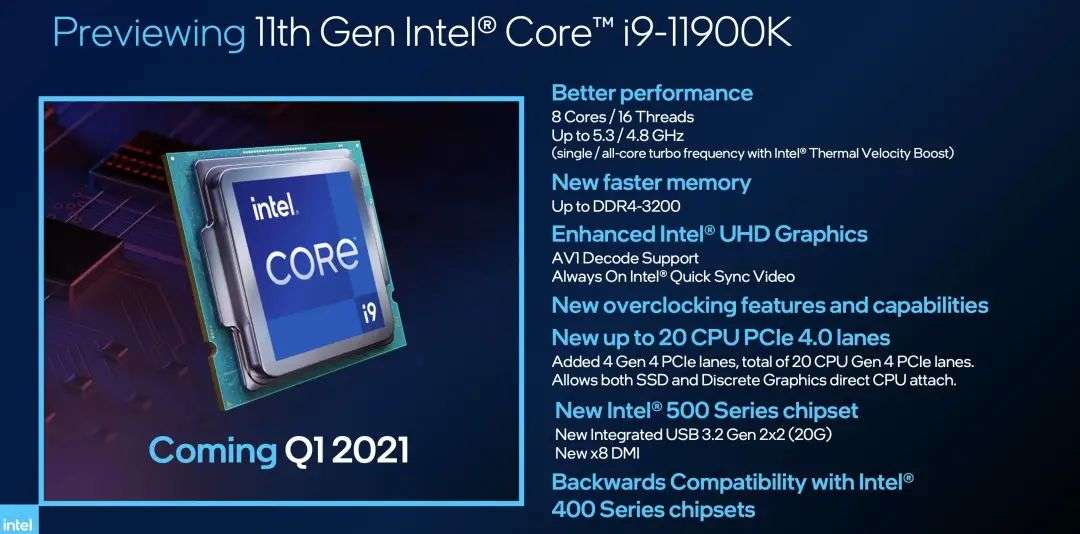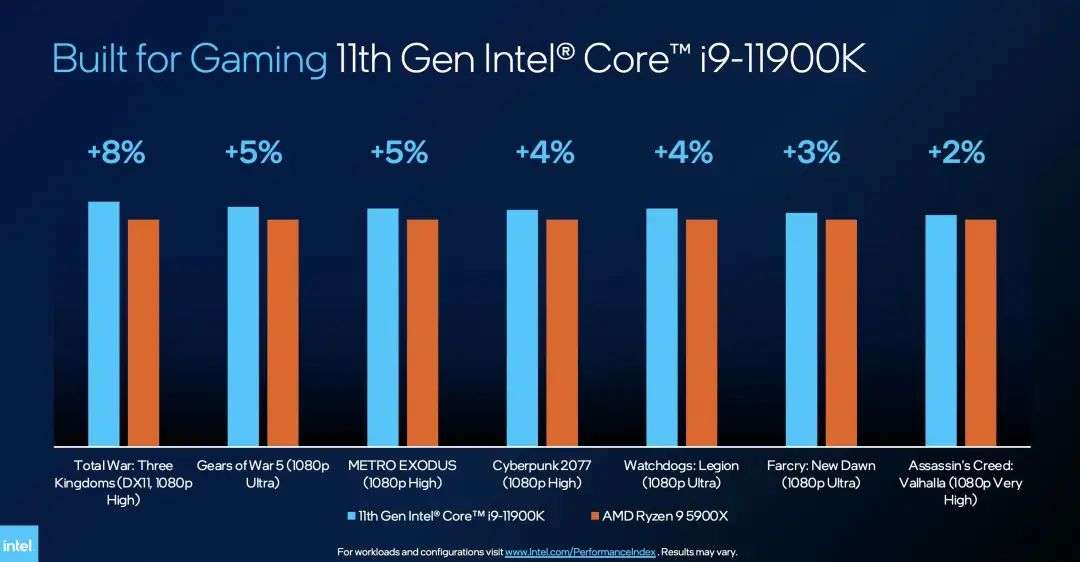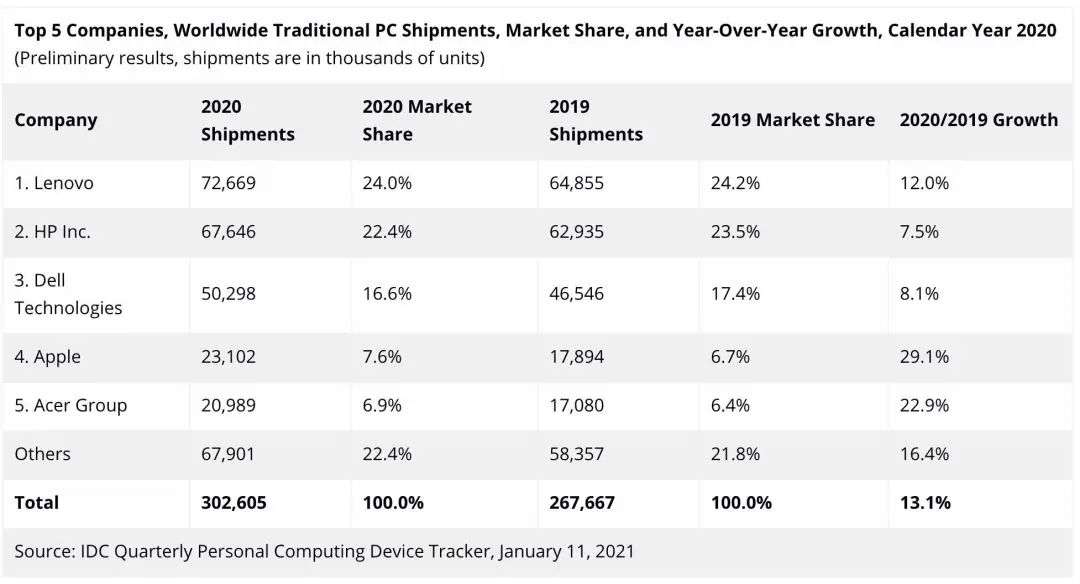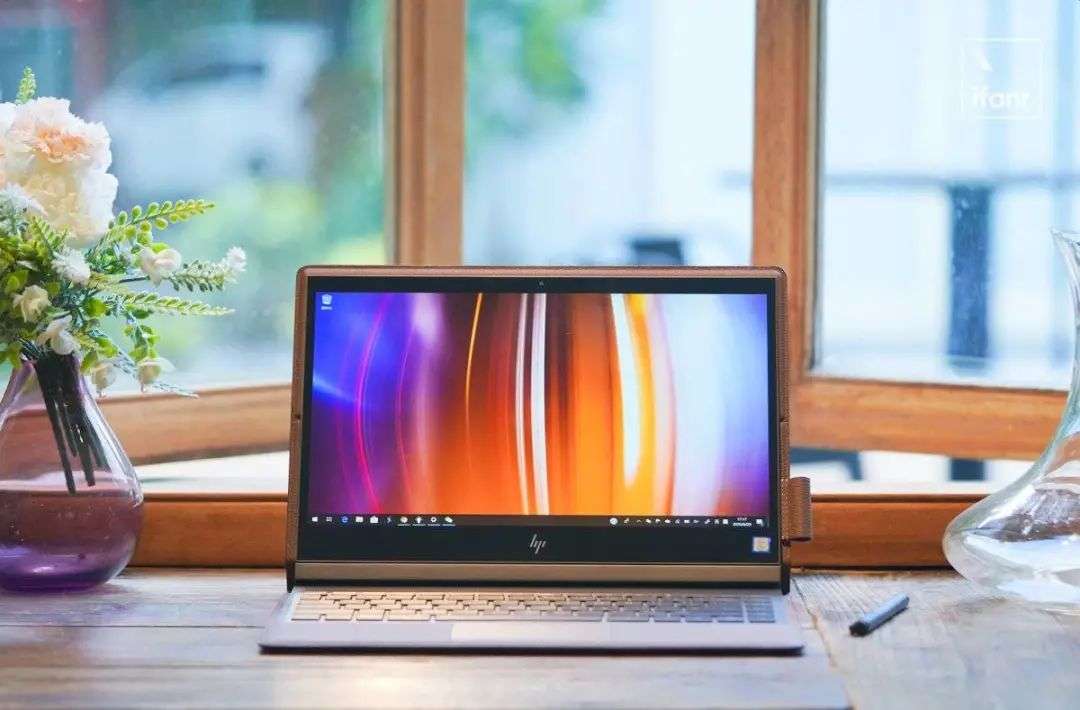The chip maker Intel has released a new processor.
Editor’s note: This article is from the micro-channel public number “love child norm” (ID: ifanr), Author: Musi.
The CES Consumer Electronics Show, which was held offline to online, has kicked off this week. The chip maker Intel also released a number of desktop and mobile processors today.
From the perspective of product composition, Intel’s new products this time have two major highlights: one is for desktop computers, the 11th generation Core processor code-named “Rocket Lake”; and the other is for thin and light gaming laptops. The H35 series of mobile end processors is also a complement to last year’s 11th generation “Tiger Lake” mobile end processors.
At present, OEM manufacturers including Acer, Asus, MSI and VAIO have announced that they will launch thin and light gaming laptops equipped with the H35 series; in the first half of 2021, there will be more than 40 related models on the market.
These models will beWhat are the changes in performance and experience, we have to find answers from this new processor.
11th-generation Core H35 series: a powerful tool for thin and light gaming notebooks
In September last year, Intel had already produced two TDPs, a total of 9 models of 11-generation Core mobile processors, but they were all low-voltage versions at the time, with a maximum TDP of only 28W, and they were basically thin and business laptops In use.
H35 is more similar to the high-end version of the U series. Picture from: Anandtech
Today’s debut is the H35 series of processors with higher performance.
There are currently three H35 series models announced by Intel. The default TDP is 28W, and the maximum can reach 35W. However, even the highest-end Core i7-11375H SE is still designed with 4 cores and 8 threads.
So in a strict sense, the H35 series announced this time does not represent the highest performance H series processors, but more similar to the “high-end version” Tiger Lake-U series.
11th generation Core H35 series mobile processor, the highest-end model i7-11375H is 4 cores 8 threads, turbo frequency Up to 5GHz
Intel also stated that this batch of H35 series processors are prepared for “ultra-portable, thin and light gaming notebooks.” If used in notebooks, the thickness of the device can be as thin as 16mm and the weight can be controlled below 2kg.
However, compared with the previous generation Core i7, the single-thread performance of the H35 series processor has increased by about 15%, which is the same as the 15WCompared with the generation of Core Duo, single thread can increase by 9%, and multi-thread can increase by 40%.
Since it comes to games, I have to talk about graphics cards. Another major change in the Tiger Lake series is that the entire series is equipped with Intel’s latest Iris Xe core display. From last year’s thin and light notebooks equipped with Tiger Lake-U processors, you can see that even without the assistance of a discrete graphics card, they can still play games with better picture quality such as “Tomb Raider” at 1080p resolution. .
Theoretically, H35 has higher TDP support, and the game performance will be better. Intel also stated that notebooks equipped with this processor can provide a maximum frame rate of 70fps for mainstream games such as League of Legends and Hitman 3 at 1080p resolution + high-quality settings.
In terms of other parameters, the H35 series is consistent with the 11th generation Tiger Lake, including support for PCIe 4.0, USB4 and Thunderbolt 4 interfaces, and Wi-Fi 6 also supports Gig+ Wi-Fi 6E specifications.
At the end of the first quarter of this year, Intel will launch another batch of high-performance H-series processors to meet the needs of heavy gamers.
By then, the highest specifications can reach 8 cores and 16 threads, the turbo frequency is up to 5GHz, and the TDP will reach 45W. It supports ultra-fast storage and 20 PCIe 4.0 channels to meet the needs of independent graphics and storage devices.
If the products are divided in this way, in 2021, there will be a number of devices that focus on light and thin, but also have certain game performance, and make games more and more massive.The market is further segmented.
H35 series of 11th generation Core processors, mainly for thin and light gaming laptops
If you don’t have a high demand for games, and you value battery life, weight, and other parts of the experience, you can indeed consider starting with a thin and light gaming notebook. With the performance of the H35 series, you can also take into account those who are productive and light creative Design users with needs.
But if you still have a demand for 4K resolution, full special effects 3A games, or those “big guys” games that put the game experience first, you still have to wait for the 45W Tiger Lake-H series to process Maker released.
Rocket Lake, the main desktop computer, and the official 12th generation Core
In addition to Tiger Lake, Intel also released the 11th-generation Core S-series processors code-named Rocket Lake-S, mainly for the desktop field.
Rocket Lake-S rendering
As early as October last year, Intel had already announced the information of Rocket Lake. For example, it will adopt the new Cypress Cove architecture and built-in Xe integrated graphics. At the same time, it will also have a fast video synchronization technology to provide better video Transcoding and hardware acceleration features.
At this CES conference, Intel further released the Rocket Lake-S processor specifications. Take the highest-end Core i9-11900K as an example. This is an 8-core 16-thread processor with a single-core turbo frequency of up to 5.3GHz, support for DDR4-3200 memory, AV1 video hardware decoding, and up to 20 PCIe 4.0 channels .
Although the number of cores of Rocket Lake S processor has been reduced from 10 cores in the previous generation to 8 cores, the performance is still improved thanks to the core upgrade
Of course, the new Rocket Lake-S is still the product of Intel’s continued “polishing” of 14nm. The process potential has basically been tapped out. The new Cypress Cove core can only be used to improve performance, which eventually brings about 19 % IPC (instructions per clock) improvement, and better AI performance.
At the same time, with the support of the new Xe set, the graphics performance will be 50% higher than the previous generation.
Intel also released a comparison between Rocket Lake-S and AMD’s competing products at the press conference. When everyone is equipped with an RTX 3080 graphics card and runs 3A games such as “Cyberpunk 2077” and “Assassin’s Creed: Odyssey” at 1080p high quality, the Core i9-11900K processor is better than the AMD Ryzen 9 5900X, but it is better. The open gap is not obvious, and none of them exceeds 10%.
The Alder Lake processor based on the enhanced 10nm process will adopt a hybrid architecture design
Through the release of the desktop processor, Intel also revealed information about the next-generation processor: the 12th-generation Core code-named “Alder Lake”.
Intel emphasized that Alder Lake represents a major breakthrough in the X86 architecture and will also become Intel’s most scalable system-level chip.
The reason for saying this is related to the improvement of the chip’s architecture. Starting from the 12th generation, Intel’s desktop and mobile processors will be built with an enhanced version of 10nm SuperFin technology, which will help provide CPUs with higher operating efficiency and more stable current.
Alder Lake engineering machine shown by Intel at the press conference
On the other hand, Alder Lake will also be a processor with a mixed architecture design, which means that it will build a high-performance core and a high-energy-efficiency core on a single processor, similar to what is common on mobile phones now Large and small core design to achieve a balance between performance and power consumption.
Detailed information about this processor will be announced by Intel in the second half of this year. But it is foreseeable that on the next generation of Core processors, we are likely to see some long-lost new things.
Under the epidemic, traditional PCs have sold better
Although the development prospects of the PC market have been looked down upon by the industry in the past few years, the emergence of the epidemic has made PC market shipments increase instead of decreasing. The emergence of a large number of home use scenarios has significantly accelerated the speed of PC replacement, and has also created new demands for the productivity of traditional computers and games by many users.
These trends are not only good news for PC manufacturers, but also benefit chip manufacturers like Intel.
The latest global PC market report has illustrated this trend. According to IDC data shows that in the fourth quarter of 2020, PC shipments achieved a year-on-year growth of 26.1%.
And throughout 2020, the global PC market shipments have also reached a 13.1% growth. The top five manufacturers have achieved positive growth in their shipments, and the manufacturers classified as “other” have not sold less equipment.
Be aware that the last time the PC market achieved an annual growth rate of more than 13% was in 2010.
IDC researchers also pointed out in the report that the PC market’s rebound last year was mainly affected by the demand for home office and online learning. At first we thought this was only a short-term demand, but now it has gradually penetrated into the mass consumer market itself .
Under a bright prospect, Intel has also accelerated its pace of iterating new products. This time in addition to the desktop and mobile 11-generation Core, it also launched the N-series Pentium Silver and Celeron processors, which are mainly for the education market, as well as the 11-generation vPro platform for the commercial field. Seize the market.
But on the other hand, with the industry’s recovery, PC manufacturers are also ushering in new competition.
The most obvious thing is undoubtedly the emergence of Apple M1, Qualcomm’s Snapdragon Core’s eye for PC devices, and the launch of Microsoft’s self-developed chip plan, which indicates that the traditional X86 platform is accepting a new round of ARM camp Challenges will also pose a direct threat to Intel’s persistent PC market.
Even in the same camp, the growing strength of AMD and the increasing number of Ryzen models on the PC end make Intel feel more pressure. If you want to ensure your own competitiveness, strive to improve the chip and architectureThe right to speak, Intel in 2021 really has to work harder.

